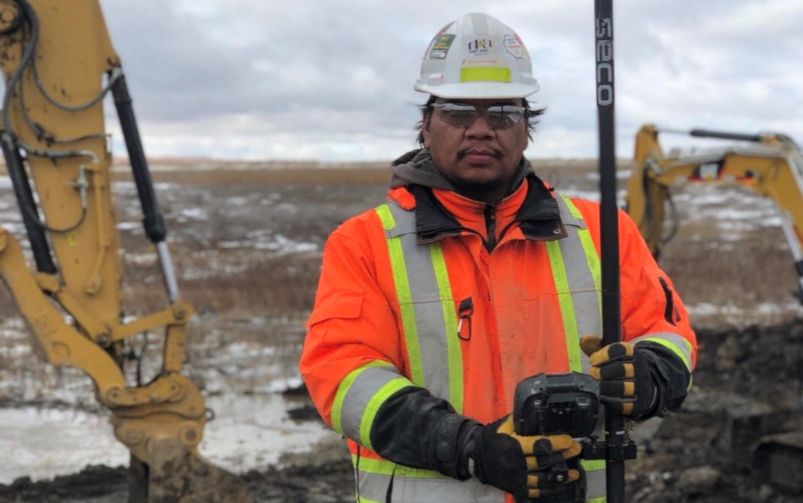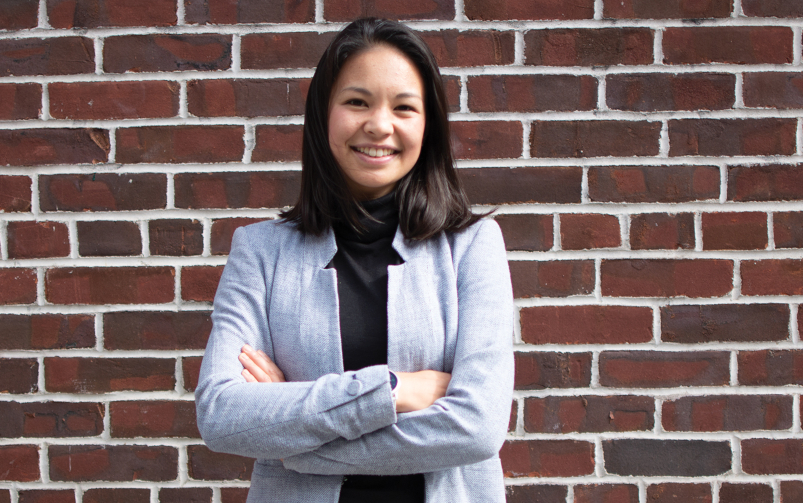Stephen de Jong. Courtesy of VRIFY
Stephen de Jong became CEO of his first exploration company at the age of 26 after making a bold pitch to the management team. Two years later, he side-stepped into the role of CEO at Integra Gold and, over the next five years, he built and led a team that raised over $150 million in equity and launched the Integra Gold Challenge, a crowd-sourced exploration data challenge that culminated in a Dragon’s Den-style finale. He sold Integra to Eldorado Gold in 2017 for $590 million and launched his newest venture, VRIFY, a company he co-founded to develop immersive mine site tours using the latest virtual reality technology.
De Jong has followed a few simple rules as he navigated this path, including mastering the art of the pitch, valuing his reputation and network, and being guided by his entrepreneurial spirit.
Mining? Why not?
De Jong joined the mining industry in 2008, taking an entry-level position in a stable of nine junior exploration companies in Vancouver. As a young entrepreneur-at-heart completing business studies at the University of Victoria, his goal was not to join the mining sector specifically, but to find a role where he could build his business skills.
“It was an entry level position,” said de Jong, “but the advantage I had for the first two years of my career was getting a feel for just about everything. With nine different companies under one roof, I saw and experienced a lot of different things.”
His first task was photocopying brochures for the investor relations team. De Jong recalled that the team was just beginning to insert hyperlinks into press releases. He and a colleague developed an algorithm to track the number of hits on certain links, an experience that would play a formative role in a future business venture.
The pitch
Between 2008 and 2010, de Jong observed that management focus and company resources were spread thinly across the nine companies. He developed an idea to isolate one asset and build an investment team to focus on it entirely. He worked on the pitch with his father, who was a director at several of the companies, and walked into a meeting that would change the course of his career.
“It was an intimidating pitch, but if it didn’t work out, it didn’t work out,” said de Jong. “I was 26 years old and had decided I no longer wanted to work for this group. Once I made that decision, I felt very powerful because I had nothing to lose.”
Armed with the support of several shareholders, absolute belief in the viability and bankability of his idea, and empowered by his “nothing to lose” attitude, de Jong successfully pitched his idea and became interim CEO of Rogue Iron Ore.
Building a business toolkit
Pitching ideas is a skill de Jong considers an essential business tool. It takes practice to master and the most important aspect is to believe what you are saying. The other component of the pitch, said de Jong, is to be aware of how the person or people you are speaking to are receiving your message. Without being manipulative, it may be necessary to modify your pitch and present the information in a way your audience will be most receptive to.
“Every conversation is a pitch in its own way,” said de Jong, “whether you’re pitching someone to invest in your company, or you’re pitching your own team on why they should buy into your strategy.”
De Jong describes his two years as CEO at Rogue as a “trial by fire.” He worked closely with an experienced colleague and raised $5 million to advance the project before transitioning into the role of CEO at Integra Gold. At the time, he had four-and-a-half-years’ experience in the industry.
Growing Integra Gold
Over the next five years at Integra, de Jong built and led a team that successfully raised over $150 million in equity. The value of the business rocketed from $10 million in 2012 to $590 million when Eldorado Gold bought Integra in 2017.
Over that time, de Jong became familiar with the inevitable bias against young people. Time and again, he said, he has seen the shade of skepticism fall on board rooms as people realized the oldest member of his team was not, in fact, the CEO.
“Whether it’s fair or not, it’s a fact of life,” said de Jong. “It’s not just in the mining industry. People often default to the older person in the room. As an entire industry we need to work on changing, but I also think that the responsibility lies in how you present yourself. The best way to get around this bias is to reference your experience and be confident in what you’re talking about.”
A highlight of de Jong’s time as CEO of Integra was the finale of the inaugural Gold Rush Challenge at PDAC in Toronto in March 2016. The initial concept – to release a trove of data from Integra’s Lamaque gold mine property in Val-d’Or, Quebec, and offer $1 million in prize money to the teams who applied the most innovative approach to identify targets – was suggested by Integra executive chairman George Salamis and developed by the entire Integra team.
“A million-dollar crowd-sourcing challenge is not game changing,” said de Jong. “One of the most powerful things we did was add the [Dragon’s Den]-style finale with 600 industry participants that resulted in $250,000 being raised for local charities. When we added that flair to it, it took on a life of its own.”
De Jong said he believes there is no shortage of innovation and technology available, but collaboration is key to realizing the full potential. The Gold Rush Challenge created that momentum and has since evolved into the annual #DisruptMining event.
Virtual mine tours
In 2017, de Jong’s career completed a neat circle when he launched his latest business venture, VRIFY. He is now at the helm of a brand-new tech start-up that uses the latest virtual reality technology to create interactive 3D tours of mine sites that can be updated in real time.
De Jong said he believes press releases, corporate presentations, websites and analysts’ notes explain only part of the story and are not the right tools to present to investors and stakeholders the work that exploration or mining companies do in a way that is both accurate and compelling. A new format is needed to help investors make educated investment decisions and for communities to make informed decisions about supporting a project.
“Our objective is to become a standard for the industry,” said de Jong. “We started 2018 with four companies signed up on the VRIFY platform and by the end of 2018 we had 50.”
Entrepreneur-at-heart
De Jong finds building a new business immensely satisfying but warns fellow entrepreneurs not to rush the process. “You want your business to be successful, which ultimately means profitable,” said de Jong. “I’ve always loved the concept of playing the long game; never make decisions based on a quick buck and keep long-term goals in mind.”
His final advice is to always consider your reputation and develop a reliable network of peers and mentors.
“That’s all that really matters,” said de Jong. “If you have that network, every opportunity that you ever wanted in the mining sector will present itself at one time or another.”
This article is part of our Future Prospects series, brought to you by Stantec. Running throughout 2019, this series will feature articles on how the mining workplace is changing and the strategies young professionals will need to build themselves a career in the digital mining industry.




